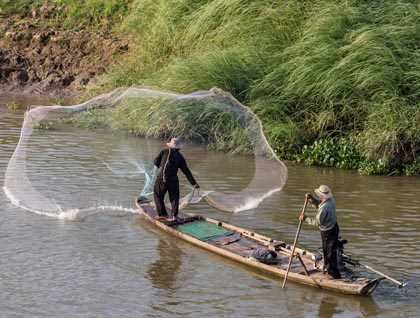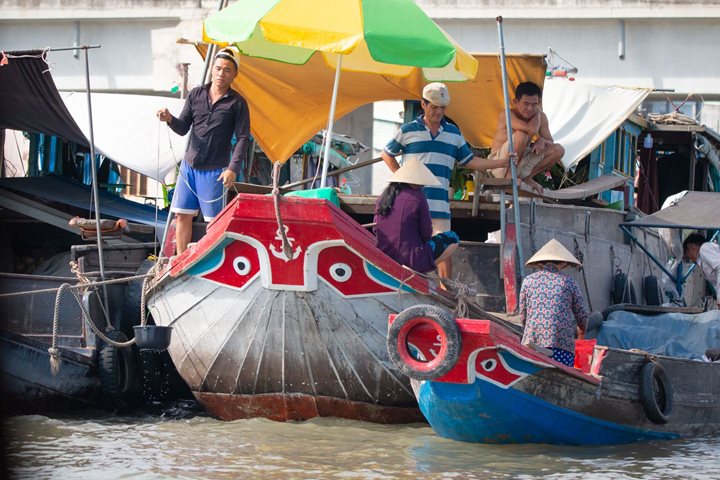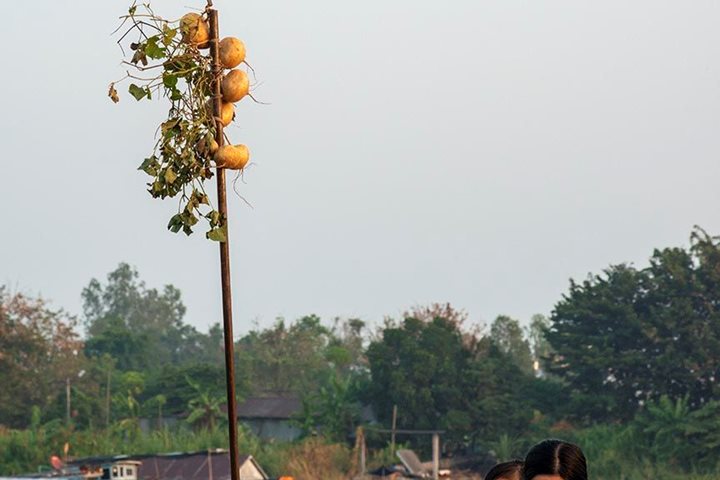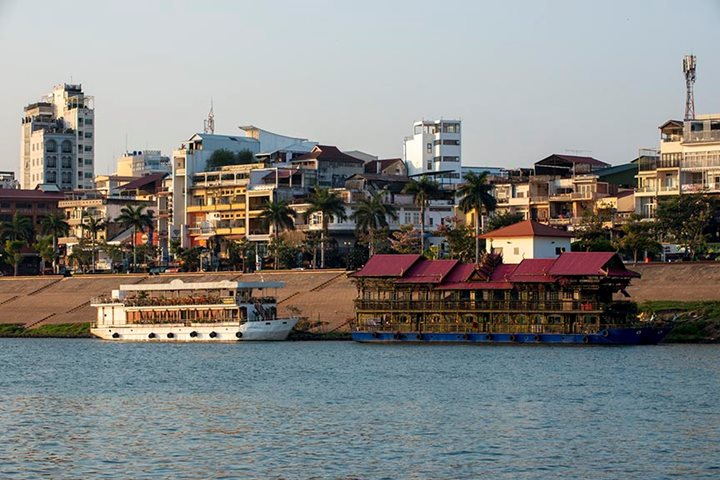After an exciting night in the capital city of Phnom Penh, we awoke to a quiet dawn still alongside the dock in the heart of the city. Some chose to go for an early morning stroll before getting underway just as the sun was clearing the horizon. This is a beautiful time of day to be on the Tonle Sap River; the temperature is cool, the city just coming to life, and the water flat calm and full of lovely reflections.
This morning our objective is to cruise up the Tonle Sap River, giving us ample opportunities to see and photograph one of the most important times of the entire year for fisherman here in Cambodia. This is the very short season, from just before the full moon in January (this year on January 4) until just after the full moon in February (this year on February 3), to catch and process the tiny trei real fish. This diminutive two-inch fish will be caught by the millions—on average over 400,000 tons of this fish will be caught each season.
These tiny fish are then processed into a protein paste locally known as prahok. This paste will become the primary source of protein for over 3 million Cambodians for the coming dry season, where fishing catches drop dramatically, until monsoon rains once again flood mighty Tonle Sap Lake, expanding its surface area four times or more. With the rains comes good fishing once again, and the tiny trei real is the gift that gets folks through the dry period.
As we cruise the river we see Cham people setting up Dai stations to suspend nets between anchored boats in the middle of the river. These nets may catch hundreds and hundreds of pounds of fish in as little as a 15 minute set. It takes many men and some small boys to lift that net back into the boat, and longer to clear the fish out of the net and get the fish into the boat than it did to catch them. We also see many other artisanal methods of fishing along the banks, including small boats with fisherman throwing cast nets near shore.
After lunch we cruise along in local sampans to the town of Kampong Chhnang, meaning “pottery embankment” in Khmer. Due to its famous red clay soil this town has been producing the very best cooking pottery in the region since the 6th century B.C. Considered primarily as woman’s work, the clay is hand thrown and formed with rudimentary wooden tools into cooking pots of all shapes and sizes. To the western mind the process could be much improved and production increased with the use of a pottery wheel, but several donated wheels lie unused and unloved among the refuge of the houses here. The old way is still considered the best way!
We then were shown the usages of the sugar palm by 64-year-old Mr. Ty, who scaled sugar palm trees to retrieve the sap from the trees high up in a rickety ladder and scaffolding system that would certainly not pass OSHA standards! He then showed us how he makes sugar, candies, and seemingly the thing he loves the most; distilled sugar palm spirits. At about 70 proof, this alcohol is very smooth and easy to enjoy.
As the sun dropped over the river we returned to our sampans and cruised among the fishing families and river people living along the banks. Those on the side of the river where town is have electricity; those on the far banks do not. The day ended as it had started, with a beautiful sun reflected in the golden light of the Tonle Sap River.







